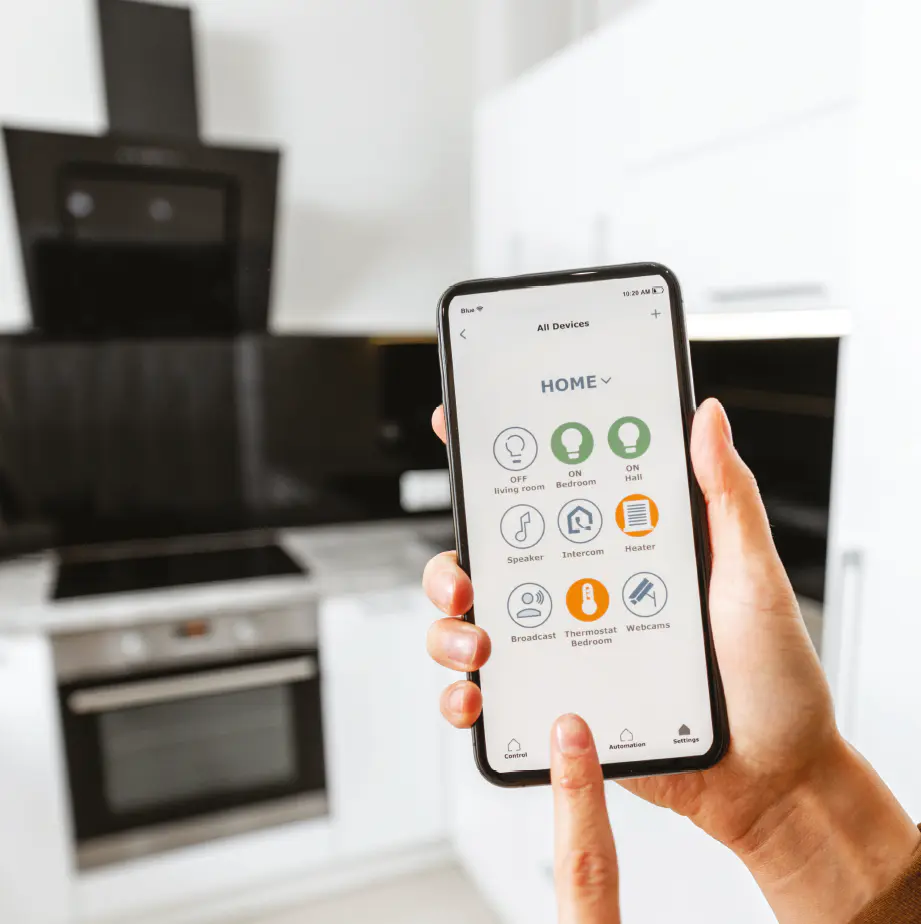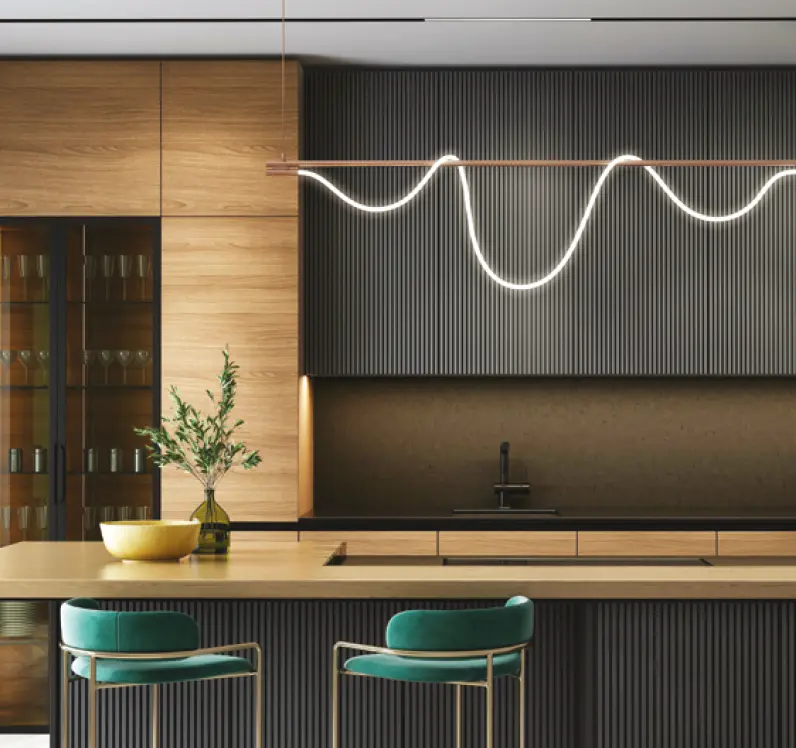In a little more than a century, the kitchen, still formally considered the room dedicated to the preparation of food, has come a long way: from obscure and smoky cavern, often in the basement of a mansion, to the front of the house as a status of social success, a technological space to be displayed on social media and where to entertain in grand style.
At the turn of the 20th Century, kitchens were possibly the least interesting rooms in a house. In aristocratic or even bourgeois households, they were never seen by guests or visitors, and seldom visited by the masters of the mansion themselves, if not for giving orders to servants, and common people would find it inappropriate to entertain visitors in their kitchens. It really was considered as a merely functional part of a house, and the farthest it stood from the dining or reception rooms, the better, for no kitchen sounds or smells had to inconvenience the guests.
If this is still the case in some very particular dwellings - Buckingham Palace is one notorious such household - nowadays the kitchen is the centrepiece of our modern homes’ architecture and design, which we proudly show off to the world through social media but also where we spend more intimate, mundane moments with our families, including, yes, consuming our meals.

DAWN AND DECLINE OF THE KITCHEN TRIANGLE PARADIGM
Though the industrial revolution had brought electricity and running water, cooking was still a pretty much labour- intensive affair in the early years of the century. By the 1920’s, kitchen fixtures started being mass-produced: “modern” kitchen cabinets, storage units and accessories were absolute must-haves for à la page mansions. The first household appliances also made their appearance, and gas stoves were introduced. Kitchen design took a decisive turn, and was the object of rational theorising.
In 1926, the “Frankfurt Kitchen” by Austrian designer Margarete Shütte Lihotzky was created to enable efficient work in the kitchen, with a low-cost design and a standardised layout. The focus of Lihotzky’s concept was the so called “golden triangle” formed by the sink, the stove and the refrigerator, that was to become the new kitchen design paradigm for generations to come, and is still resisting today.
While the discovery of new materials and the introduction of ever more sophisticated appliances offered choice, flexibility and freedom to emancipated women, it wasn’t until the 1980’s that a new revolution came about. Open plan layouts disrupted the traditional conception of the Frankfurt Kitchen with the introduction of a central island, and literally brought down the walls around it, making it the pulsing heart of the home. Open plan kitchens have since slowly grown to become, in many societies, the new norm.

Kitchens are the perfect mirror of a society’s evolution, since they serve the lifestyles of individuals. If, over the years, living spaces have gotten smaller, the internal layout of newly built apartment has dramatically changed. Corridors, around which the various rooms of the house were organised, have virtually disappeared, with more living space being freed up. Also, the kitchen relative space inside the average home is increasing, depending on what we actually consider as “kitchen”, for the boundaries are blurred. Cooking space, living room, dining room, reception room, work study: kitchens nowadays are multi-tasking spaces, and stand at the centre of most of our domestic activities. Albeit 13% smaller in overall terms with respect to the 1960s, according to the Kitchen Design and Innovation Trends report 2019 by UK- based Trend Monitor, they now occupy an important spot in our daily lives.
They have also become a lot smarter, with the constant appearance of new appliances that make food prep easier and quicker, as well as washing and cleaning. They also help us stay healthy and most of all, they assist us in our daily efforts to preserve our planet, fight food waste and save energy. We can now interact with our kitchens through our smartphones, and access recipes, tips and all kinds of useful info, as well as managing our appliances and ordering supplies. The refrigerator, of all appliances, as our awareness about food lifecycle is growing, has become our domestic food freshness hub.

TOPS, LIGHT AND NOISE ABATEMENT ARE THE NEW FRONTIER
According to a recent report by Houzz 2022 focusing on American kitchen trends, countertops are the latest craze for homeowners renovating their kitchens, and the most common feature improved with a smashing 91%. In the past year, one third of the renovations included the upgrading of major appliances, with wireless and smartphone controls being the most sought after features. And since kitchens are growing in size in terms of floor space, islands kept trending, especially since for one in five households having one, work or study have become the main activities performed there. For that same reason, 94% of renovations of kitchens having one included new lighting fixtures above the islands.
Light is definitely one of the big new entries in the latest kitchen trends. More and better seems to be the mantra, especially naturally light. Larger windows have made their appearance, and they’re being installed at countertop level for a seamless connection with the outside. The two years of pandemics and successive lockdown might account for this outdoors crave. It also seems that smart working and the forced indoor confinement during this period have acted as sort of time warp provoking a sudden step increase in the progression of certain trends.
But the latest frontier might be represented by noise, or rather “acoustics”. Large open spaces offer no barriers to the noises produced by appliances, hoods, the banging of pots and pans, people actively participating in conference calls or simply socialising and relaxing. Appliances are thus becoming quieter, and new materials are being employed to address the issue. Also, “broken-plan” solutions for noise abatement, found in the office sector, are now crossing over into the domestic market. And this is possibly not the last we hear about the evolution of the modern kitchen.

Copyright © Homa 2023
All rights reserved

.jpg?VGhlIFBlcmZlY3QgU2xvdC1pbijmraPnoa4pLmpwZw==)

































